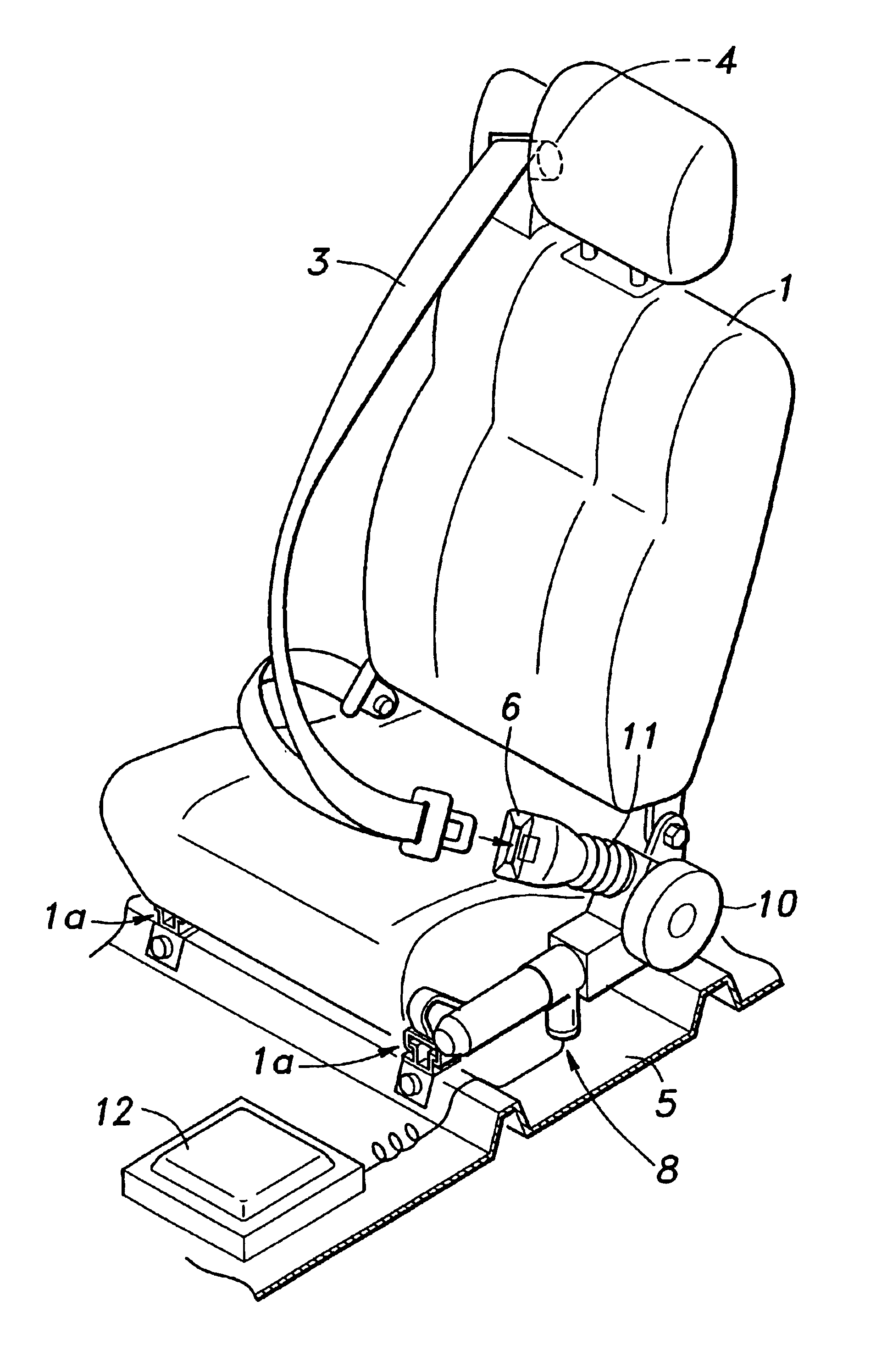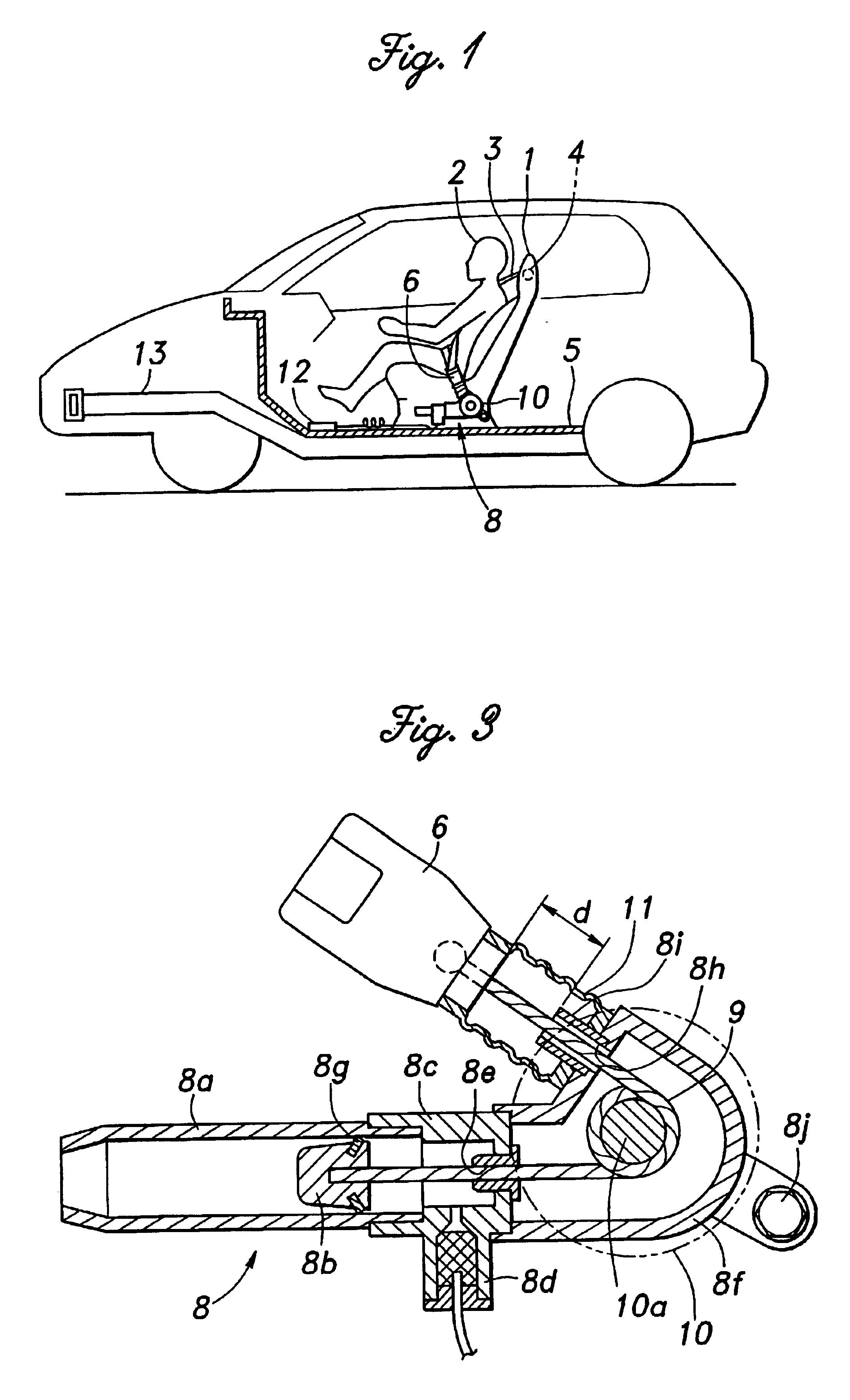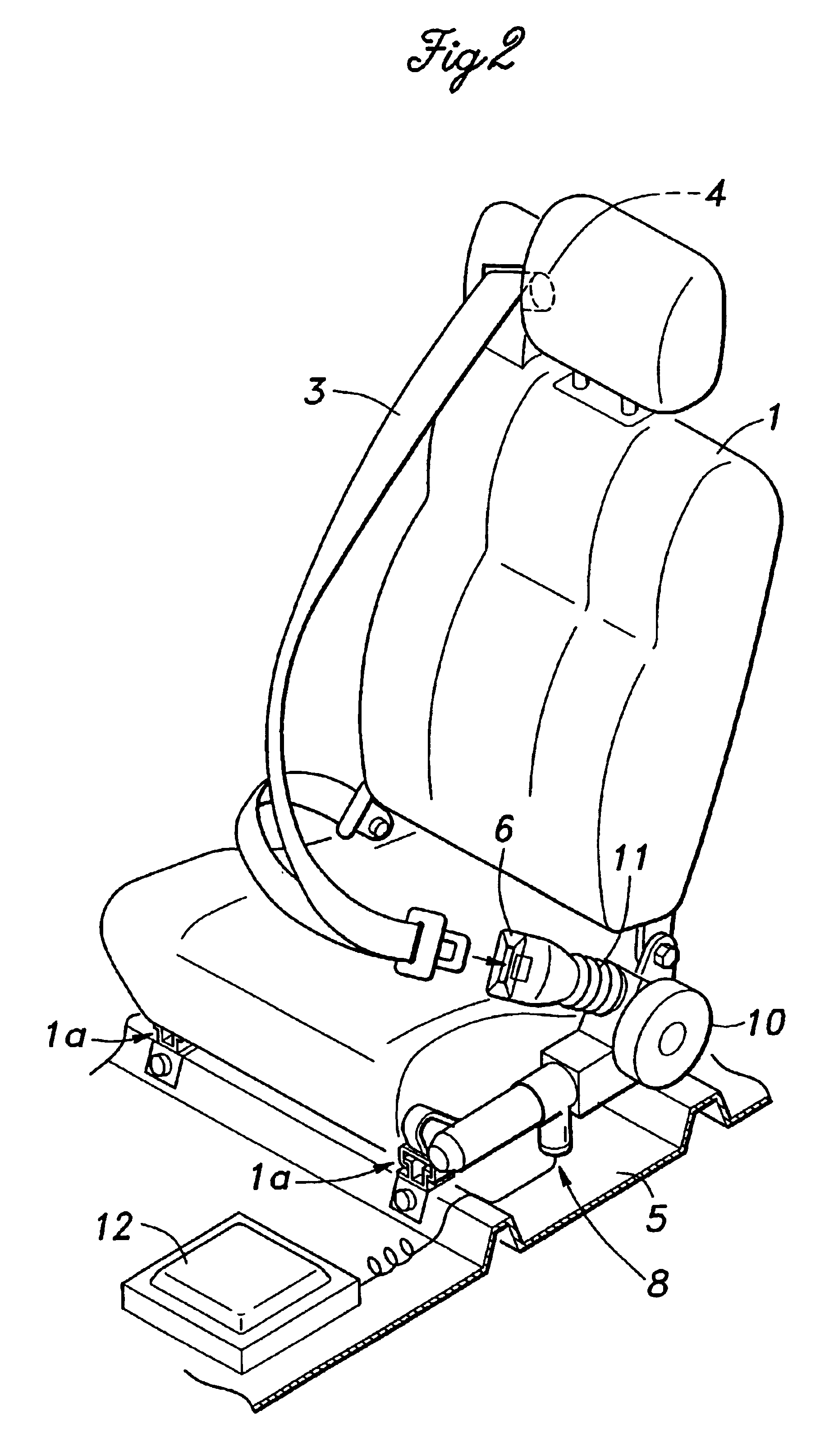Automotive vehicle occupant protection system
- Summary
- Abstract
- Description
- Claims
- Application Information
AI Technical Summary
Benefits of technology
Problems solved by technology
Method used
Image
Examples
Embodiment Construction
FIG. 1 schematically illustrates the overall structure of a vehicle incorporated with a vehicle occupant protection system embodying the present invention. The vehicle occupant protection system includes a seat belt 3 for restraining the vehicle occupant 2 to the seat 1. As shown in FIG. 2 also, the seat belt 3 has three anchor points, and an end of the seat belt is connected to a retractor 4 integrally provided in a shoulder part of the seat 1, another end fixedly attached to a side of the seat bottom on the same side as the shoulder anchor, and an intermediate part having a tongue plate that is latched to a buckle 6 attached to the side of the seat bottom on the other side of the shoulder anchor. Therefore, the vehicle occupant 2 who is seated in the seat 1 is integrally restrained to the seat 1 by the seat belt 3. The seat 1 is attached to a floor 5 via seat rails 1a so as to be adjustable in the fore-and-aft direction.
An actuator 8 is integrally attached to a side of the seat bo...
PUM
 Login to View More
Login to View More Abstract
Description
Claims
Application Information
 Login to View More
Login to View More - R&D
- Intellectual Property
- Life Sciences
- Materials
- Tech Scout
- Unparalleled Data Quality
- Higher Quality Content
- 60% Fewer Hallucinations
Browse by: Latest US Patents, China's latest patents, Technical Efficacy Thesaurus, Application Domain, Technology Topic, Popular Technical Reports.
© 2025 PatSnap. All rights reserved.Legal|Privacy policy|Modern Slavery Act Transparency Statement|Sitemap|About US| Contact US: help@patsnap.com



